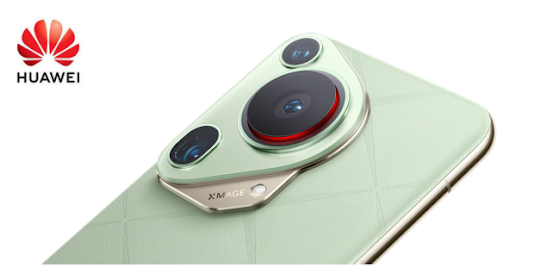How Huawei Became a Leader in the Tech Industry
Introduction
Huawei has carved
out a significant place in the global tech industry, emerging as a leader
through innovation, strategic expansion, and a customer-centric approach. From
its humble beginnings to becoming a powerhouse in telecommunications and
consumer electronics, Huawei's journey is a testament to resilience and
forward-thinking.
Founding and Early Years
Huawei was established in 1987 by Ren Zhengfei in Shenzhen,
China. Initially, it started as a sales agent for a Hong Kong-based company,
selling private branch exchange (PBX) switches. Overcoming early challenges,
Huawei focused on developing its own technologies, which set the stage for
future growth.
Innovation and Research
Investment in research and development (R&D) has been a
cornerstone of Huawei's success. The company allocates a significant portion of
its revenue to R&D, resulting in breakthrough technologies like advanced 5G
solutions and cutting-edge smartphones. This
commitment to innovation has kept Huawei at the forefront of the tech industry.
Product Diversification
Huawei's product portfolio is vast, ranging from
telecommunications equipment to consumer electronics like smartphones, tablets,
and wearables. The company's ability to diversify and excel in various product
categories has contributed to its robust market presence. Flagship products
like the Huawei P series and Mate series have garnered global acclaim.
Global Expansion
Huawei's global expansion strategy involved entering
international markets with competitive pricing and high-quality products. By
establishing partnerships with local distributors and investing in local
R&D centers, Huawei successfully penetrated markets in Europe, Asia,
Africa, and the Americas.
Partnerships and Collaborations
Collaborations with global tech giants and telecom operators
have bolstered Huawei's market position. Partnerships with companies like Leica
for camera technology and Google for software integration have enhanced the
value and appeal of Huawei's products.
Telecommunication Leadership
Huawei is a dominant player in the telecommunications
industry, particularly in 5G technology. The company has been instrumental in
building 5G infrastructure worldwide, offering advanced network solutions that
enhance connectivity and support emerging technologies like IoT and autonomous
driving.
Challenges and Controversies
Huawei mobile phones has faced
several regulatory and political challenges, particularly from the United
States. Allegations of espionage and intellectual property theft have led to
bans and restrictions. However, Huawei has consistently denied these
allegations and has taken steps to ensure transparency and security in its
operations.
Corporate Culture and Leadership
Huawei's management philosophy, influenced by founder Ren
Zhengfei, emphasizes resilience, innovation, and customer satisfaction. The
company's decentralized management structure allows for agility and quick
decision-making, fostering a culture of continuous improvement and
responsiveness to market changes.
Focus on Sustainability
Huawei is committed to sustainability, implementing
environmental initiatives and sustainable practices across its operations. The
company focuses on reducing carbon emissions, promoting recycling, and
enhancing energy efficiency in its products and processes.
Customer-Centric Approach
Understanding and meeting customer needs is central to
Huawei's strategy. The company invests in customer service and feedback
mechanisms, ensuring that products and services are aligned with customer
expectations. This customer-centric approach has helped Huawei build strong
brand loyalty.
Technological Advancements
Huawei B is at the forefront of technological advancements
in AI, cloud computing, and 5G. The company's AI solutions are integrated into
various applications, enhancing user experiences and operational efficiencies.
Huawei's cloud services provide robust and scalable solutions for businesses
worldwide.
Impact of U.S. Sanctions
The U.S. sanctions have posed significant challenges for
Huawei, particularly in accessing advanced semiconductor technology and
software. Despite these hurdles, Huawei has adapted by developing in-house
technologies and diversifying its supply chain to reduce dependence on U.S.
suppliers.
Future Prospects
Looking ahead, Huawei's future prospects appear promising.
The company is poised to continue its growth in areas like AI, 5G, and cloud
computing. With ongoing investments in R&D and a focus on innovation,
Huawei is well-positioned to navigate future challenges and capitalize on
emerging opportunities.
Conclusion
Huawei's brands journey from
a small startup to a global tech leader is a remarkable story of innovation,
resilience, and strategic execution. By prioritizing research, understanding
market needs, and expanding globally, Huawei has made a lasting impact on the
tech industry. As the company continues to evolve, its commitment to excellence
and customer satisfaction will drive its success in the years to come.




Comments
Post a Comment